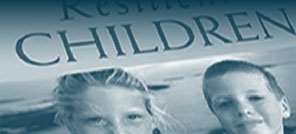We are very happy that you like sharing articles from the site. To send more articles to your friends please copy and paste the page address into a separate email.Thank You.
Printer-Friendly Version | Email Article
A basic message I have attempted to convey in my workshops and writings is the essential nature of connections in providing emotional and physical well-being and meaning to our lives. In the books that I have co-authored with my colleague Dr. Sam Goldstein, we have highlighted connections as a necessary component of resilience. A number of my website articles, including those following the horror and tragedy of September 11, have examined connections as a source of comfort, support, and hope. Relatedly, in other articles I have described the powerful benefits we experience both when we display and are the recipients of compassion and acts of kindness.
While connections with others has received the greatest attention among mental health clinicians and researchers, there are a variety of forms in which connections exist. Psychiatrist and friend Dr. Ned Hallowell wrote in his book Connect: 12 Vital Ties that Open Your Heart, Lengthen Your Life, and Deepen Your Soul, “What is connection or what I call connectedness? It is a feeling of being a part of something larger than yourself. This something may be a friendship, a marriage, a team, a school, a company, an activity you love, a country, even a set of ideals, like the Bill of Rights, or a belief system, like a religion.” Ned offers ample evidence of the healing power of connections throughout his wonderful book.
A thought-provoking report was recently released that provides further evidence of the significant role of connections in addressing and preventing an array of childhood problems. The report, “Hardwired to Connect: The New Scientific Case for Authoritative Communities,” was prepared by the Commission on Children at Risk, a group comprised of 33 prominent children’s doctors, research scientists, and mental health and youth service professionals. The Commission details the problems faced by children in the United States, casting the spotlight on the lack of connections in the lives of these youngsters.
The report, which may be purchased by going to www.americanvalues.org, notes that the crisis in our youth involves the following two areas:
“The first part is the deteriorating mental and behavioral health of U.S. children. We are witnessing high and rising rates of depression, anxiety, attention deficit, conduct disorders, thoughts of suicide, and other serious mental, emotional, and behavioral problems among U.S. children and adolescents.
“The second part is how we as a society are thinking about this deterioration. We are using medications and psychotherapies. We are designing more and more special programs for ‘at risk’ children. These approaches are necessary but they are not enough. Why? Because programs in individual risk-assessment and treatment seldom encourage us, and can even prevent us, from recognizing as a society the broad environmental conditions that are contributing to growing numbers of suffering children.”
The Commission then raises the question, “What’s causing the crisis?” Their answer is direct and specific: “In large measure, what’s causing this crisis of American childhood is a lack of connectedness. We mean two kinds of connectedness—close connections to other people, and deep connections to moral and spiritual meaning.” The members of the Commission contend that while research from the fields of neuroscience and basic biology indicate that children are “hardwired to connect” to other people and for moral meaning in their lives, “in recent decades, the U.S. social institutions that foster these two forms of connectedness for children have gotten significantly weaker.”
To address this lack of connectedness, the Commission advocates the creation of “authoritative communities.” The word “authoritative” is borrowed in part from the work of Dr. Diana Baumrind who more than 30 years ago described different styles of parenting, including authoritative, permissive, authoritarian, and neglectful. Parents who are defined as authoritative are warm, involved, and accepting, and establish clear-cut and reasonable guidelines, consequences, and expectations. Research has consistently demonstrated that children are more likely to experience healthy emotional development when they are reared by parents who practice an authoritative approach.
The Commission explained its choice of the word “authoritative,” noting, “First the word refers to a strong body of scholarly evidence demonstrating the value of that particular combination of warmth and structure in which children in a democratic society appear most likely to thrive. Second, the word comes from the Latin auctor, which can mean ‘one who creates.’ We like that. Authoritative communities just don’t happen. They are created and sustained by dedicated individuals with a shared vision of building a good life for the next generation.”
In order to create an authoritative community, one must understand its features. The Commission lists what it considers to be the 10 main characteristics. They include:
- It is a social institution that includes children and youth.
- It treats children as ends in themselves.
- It is warm and nurturing.
- It establishes clear limits and expectations.
- The core of its work is performed largely by non-specialists.
- It is multi-generational.
- It has a long-term focus.
- It reflects and transmits a shared understanding of what it means to be a good person.
- It encourages spiritual and religious development.
- It is philosophically oriented to the equal dignity of all persons and to the principle of love of neighbor.
In light of these 10 characteristics, the Commission states as a primary goal “to deepen our society’s commitment to those values that build and sustain authoritative communities, and to reconsider our commitment to those values that often replace or undermine them. The former include enduring marital relationships and family connectedness, community action and civic engagement, and concern for the moral and spiritual well-being of all children. The latter include ‘me first’ and consumerism as ways of living, materialism, and the notion of the individual person as self-made and owing little to others or to society.”
Knowledge of the 10 characteristics of an authoritative community together with an appreciation of this primary goal can guide our individual behaviors especially in terms of the responsibility each of us assumes to create environments in which children thrive and feel connected. When problems arise in our youth, we must certainly provide services to address these problems. However, if as the Commission contends, children are “hardwired” from birth to connect with others, the more we focus our time, attention, energy, and resources on forming strong bonds with our youth, the more likely we will prevent problems from arising. In past writings, I have referred to studies that indicate that when students feel a positive attachment to at least one adult in their school, they are less likely to engage in acts of violence or drop out. The power of relationships must never be underestimated in preventing the emergence of a wide spectrum of self-defeating, dangerous behaviors in our youth.
In our roles as parents, teachers, coaches, and other caregivers, we should ask whether our actions support an authoritative community in which we believe each child is our “own” child, that each child is part of “our” community. There are many ways we can nurture the qualities of an authoritative community. In next month’s article, I plan to share some suggestions. However, during the next month you might wish to reflect upon the following interrelated questions:
What are one or two things I’ve done this month to strengthen my connections with my family?
What are one or two things I’ve done this month to strengthen my connections with my community?
What activities have I engaged in this month that have contributed to the well-being of others?
What programs exist in my community that strengthen connections between adults and youth and adults with other adults and do I participate in these programs?
Do I treat others with respect and dignity, as I myself would like to be treated?
Do I teach children, by example, a set of moral values that are in accord with principles of honesty, decency, and compassion?
As you consider these questions, it may be helpful to think of the following observation expressed by Ralph Waldo Emerson: “It is one of the most beautiful compensations of life that no man can sincerely try to help another without helping himself.” Authoritative communities as defined by the Commission on Children at Risk are environments in which all of its members are likely to experience this “beautiful compensation of life.”



